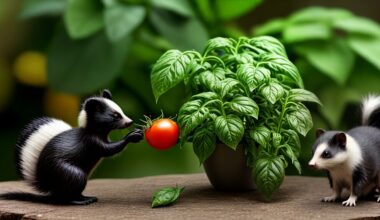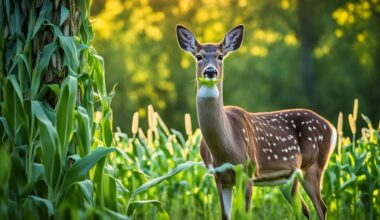Are you a tomato gardener? Do you find yourself losing precious tomato plants to sneaky intruders? If so, you may be dealing with wildlife that have a taste for your juicy tomatoes. Understanding these intruders and their feeding habits is crucial for protecting your garden. In this section, we will explore the various wild animals that eat tomatoes and how they can be a challenge for gardeners like you.
Key Takeaways:
- Wild animals, including mammals, birds, and insects, can have a penchant for tomatoes.
- Understanding their behavior and feeding patterns can help in implementing effective deterrent strategies.
Identifying Tomato-Eating Wildlife in Your Garden
Tomatoes are a favorite treat for many types of wildlife. Identifying the culprits that are causing damage to your tomato plants is the first step in protecting your garden. Here are some common tomato-eating animals to look out for:
| Animal | Characteristics |
|---|---|
| Raccoons | These nocturnal creatures have distinctive black mask-like markings around their eyes and are known for their dexterous paws, which they use to manipulate objects and food. They are omnivorous and have a particular fondness for fruits and vegetables, including tomatoes. |
| Squirrels | These bushy-tailed rodents can climb trees and jump long distances. They are active during the day and feed on a variety of foods, including nuts, seeds, and fruits. Squirrels are known to have a strong appetite for tomatoes, especially when they are ripe and juicy. |
| Deer | These graceful animals are herbivores that feed on a variety of plants and fruits, including tomatoes. They are known for their large ears and distinctive white tails. Deer are more likely to be a problem for gardens located near wooded areas or parks. |
| Groundhogs | Also known as woodchucks, these burrowing rodents are herbivores that feed on a variety of plants, including tomatoes. You can recognize groundhogs by their stout bodies and bushy tails. They are most active during the day and can cause significant damage to gardens if left unchecked. |
| Birds | Birds such as sparrows, robins, and blue jays are attracted to tomatoes as they ripen and are ready for picking. They can cause damage by pecking at the fruit and may also attract other pests to your garden. |
| Insects | Several insect species, including hornworms, aphids, and fruit flies, can cause significant damage to tomato plants and their fruits. These pests are attracted to the sweet scent of ripening tomatoes and can quickly multiply, causing widespread damage to your garden. |
By identifying the specific animals or pests causing damage to your tomato plants, you can tailor your protective measures to be more effective.
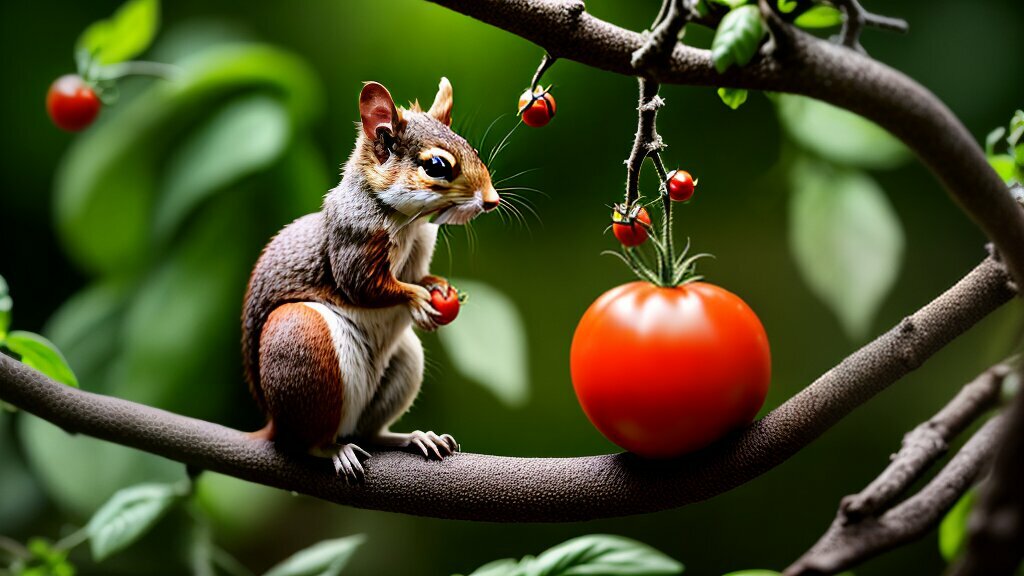
Common Tomato-Eating Animals and their Characteristics
Now, let’s explore some of the common wild animals that enjoy snacking on your juicy tomatoes.
| Animal | Characteristics |
|---|---|
| Raccoons | These nocturnal mammals are highly intelligent and have nimble fingers that can pluck tomatoes with ease. They are also known to cause significant damage to gardens, so deterrent methods may be necessary. |
| Squirrels | These playful critters are also adept at stealing tomatoes. They may bite into the fruit and discard it, leaving a trail of damaged tomatoes in their wake. |
| Birds | Birds such as crows, pigeons, and robins may peck at tomatoes, causing small holes that can damage the fruit. They may also be attracted to the sweet aroma of ripe tomatoes and feed on them until there are none left. |
| Groundhogs | These burrowing rodents are notorious for gobbling up entire tomato plants. They are attracted to the vegetation as well as the fruit, so be sure to protect your garden beds. |
| Deer | These graceful animals may be a lovely sight in your backyard, but they can also be a menace to your tomato plants. Their large appetites mean they can devour entire plants in one sitting. |
Tip: You can identify which animals are causing damage to your tomato plants by inspecting the leaves, stems, and fruit. Look for signs of bites, cuts, and missing fruit.
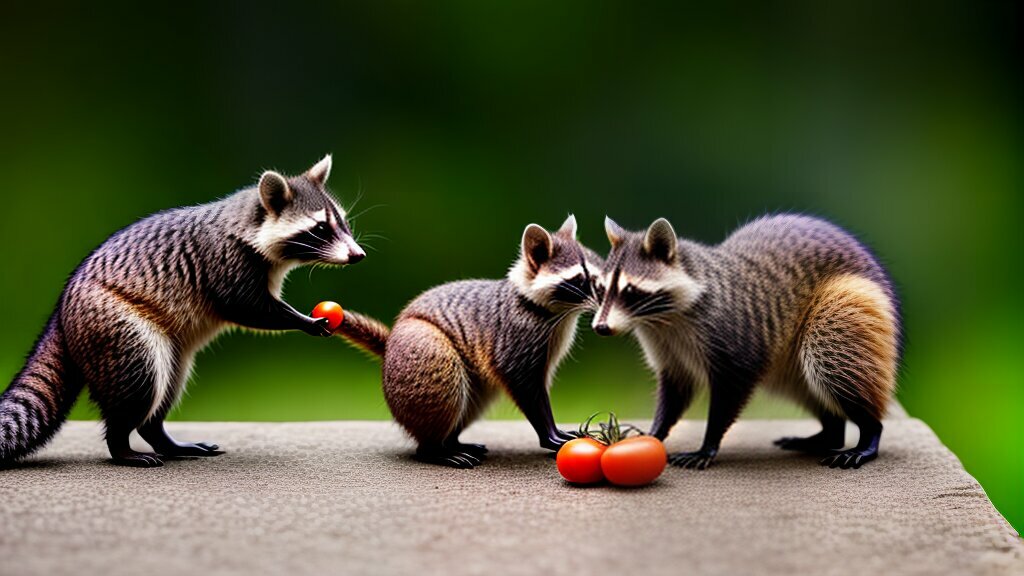
Protecting Your Tomato Plants from Wildlife Intruders
Once you’ve identified the tomato-eating wildlife in your garden, it’s time to take action to protect your tomato plants. Here are some effective strategies:
Cage or Cover Your Plants
One of the most effective ways to prevent wildlife from eating your tomatoes is by enclosing them in a cage or covering them with a physical barrier like netting or wire mesh. This will prevent larger animals like deer and raccoons from accessing your plants.
Tip: Make sure your cage or cover is large enough for your tomato plants to grow and has a secure latch or fastener to prevent animals from opening it.
Use Repellents
Another option is to use animal repellents like predator urine or hot pepper spray. These scents and flavors can discourage animals from approaching your tomato plants.
Tip: Be sure to reapply repellents after rain or watering to ensure they remain effective.
Try Companion Planting
Consider planting herbs or flowers that repel animals like marigolds, garlic, or lavender near your tomato plants. These companion plants can help deter tomato-eating wildlife while adding beauty and fragrance to your garden.
Use Deterrent Techniques
There are several creative ways to deter wildlife from eating your tomatoes, such as installing a motion-activated sprinkler or placing shiny objects like CDs or aluminum foil around your plants. These deterrent techniques can startle animals and discourage them from approaching your tomato plants.
Tip: Be mindful of your local regulations regarding certain deterrent techniques, such as live traps or electric fences.
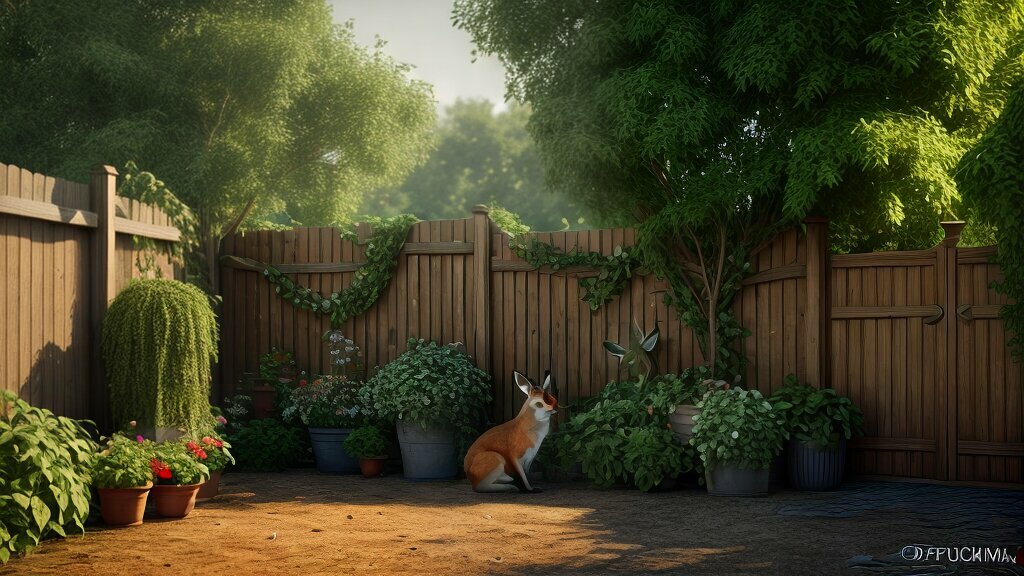
Protecting your tomato plants from wildlife intruders may take some effort, but it’s worth it to enjoy a bountiful harvest. Remember, coexisting with wildlife is essential for maintaining a healthy ecosystem, so consider implementing sustainable practices that allow both you and the animals to thrive.
Balancing Conservation and Tomato Gardening
While protecting your tomato plants from wildlife intruders is important, it’s also essential to strike a balance between conservation efforts and tomato gardening. Wild animals are an integral part of the natural ecosystem and play a crucial role in maintaining a healthy environment.
It’s important to remember that tomatoes are just one of many foods that these animals rely on to survive. While it can be frustrating to see your hard work in the garden being consumed by wildlife, it’s essential to respect their need for food and habitat.
There are several ways to create a harmonious environment where both wildlife and gardeners can thrive. One approach is to incorporate native plants into your garden that provide food and shelter for local wildlife. By creating a diverse landscape, you can help support a healthy ecosystem while also enjoying a bountiful tomato harvest.
Additionally, implementing sustainable gardening practices can help minimize the impact of your garden on the environment. Consider using organic fertilizers and avoiding pesticides, which can harm beneficial insects and other wildlife.
By finding ways to coexist with the wildlife in your area, you can enjoy the beauty and diversity of nature while also reaping the rewards of a successful tomato garden.

“We can’t command nature except by obeying her” – Francis Bacon
Conclusion
Congratulations, you are now equipped with the knowledge and tools to protect your tomato plants from wildlife intruders. By identifying tomato-eating wildlife, understanding their behavior, and implementing effective deterrent strategies, you can minimize damage and maximize your tomato harvest.
Remember to strike a balance between conservation and tomato gardening. By adopting sustainable practices, you can create a harmonious environment where both wildlife and gardeners can thrive.
With these tips, you can enjoy a flourishing tomato garden and coexist with the diverse wildlife surrounding you. Happy gardening!



